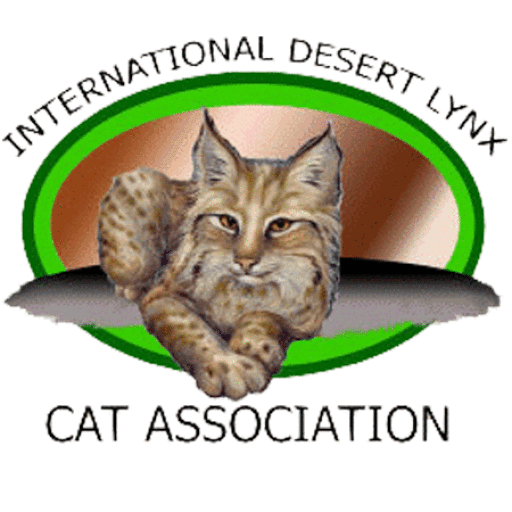History of the Desert Lynx Breed
In the International Desert Lynx Cat AssociationBreed History
The Bobcat is the foundation cat for the Desert Lynx breed. The first and subsequent generations derived from the breeding of a Bobcat to a IDLCA acceptable domestic cat is recognized as a domestic Desert Lynx cat. IDLCA recognizes the following breeds as acceptable out crosses to the Bobcat: Maine Coon, Manx, American Bobtail, American Lynx, or Pixie-Bob. Third, fourth and subsequent generations can only be bred to a registered Desert Lynx. The International Progressive Cat Breeders Alliance ‘IPCBA’ was the first international all-breed registry to recognize the Desert Lynx for registration. IPCBA was also the first international all-breed registry to recognize the Desert Lynx as an established domestic breed, making the breed eligible for Championship competition. The International Desert Lynx Cat Association( IDLCA) has total control of the Desert Lynx breed in IPCBA.
The Desert Lynx has a very people loving, friendly temperament and has been kept as a ‘domestic’ pet for many years. Their popularity as a pet in the United States and Europe has been on the rise, as more people become aware of them. Kittens resulting from the mating of a Bobcat to an acceptable IDLCA domestic cat have a very mild temperament, therefore the Desert Lynx combines the beautiful “Wild” look of the Bobcat with the laid-back, playful, loyal and affectionate personality of a dog.
You do not need a license to own a Desert Lynx. The Diet should be a high quality cat food. The Desert Lynx is easily litter box trained. They do not require a special health or vaccination regime. Their main requirement is lots of love, attention, hugs and kisses.
Desert Lynx are loyal, smart, people loving, and have a out-going personality. They make excellent companion for families and other pets. Desert Lynx have magnificent, spotted, marbled, or clouded coats in a range of colors from Snow’s to Silver, Blue, Gray, Copper, Charcoal, Chocolate, or Ebony. Dramatic eye lines around the eyes give the Desert Lynx a very exotic look. They all have belly spots, and bar stripes around the legs and sometimes down the back and tail. The tails of the Desert Lynx come in different length from rumpie to 3/4 tail (to the hock). The exotic markings along with the wonderful personality of the Desert Lynx make them the new breed of the Millennium.
